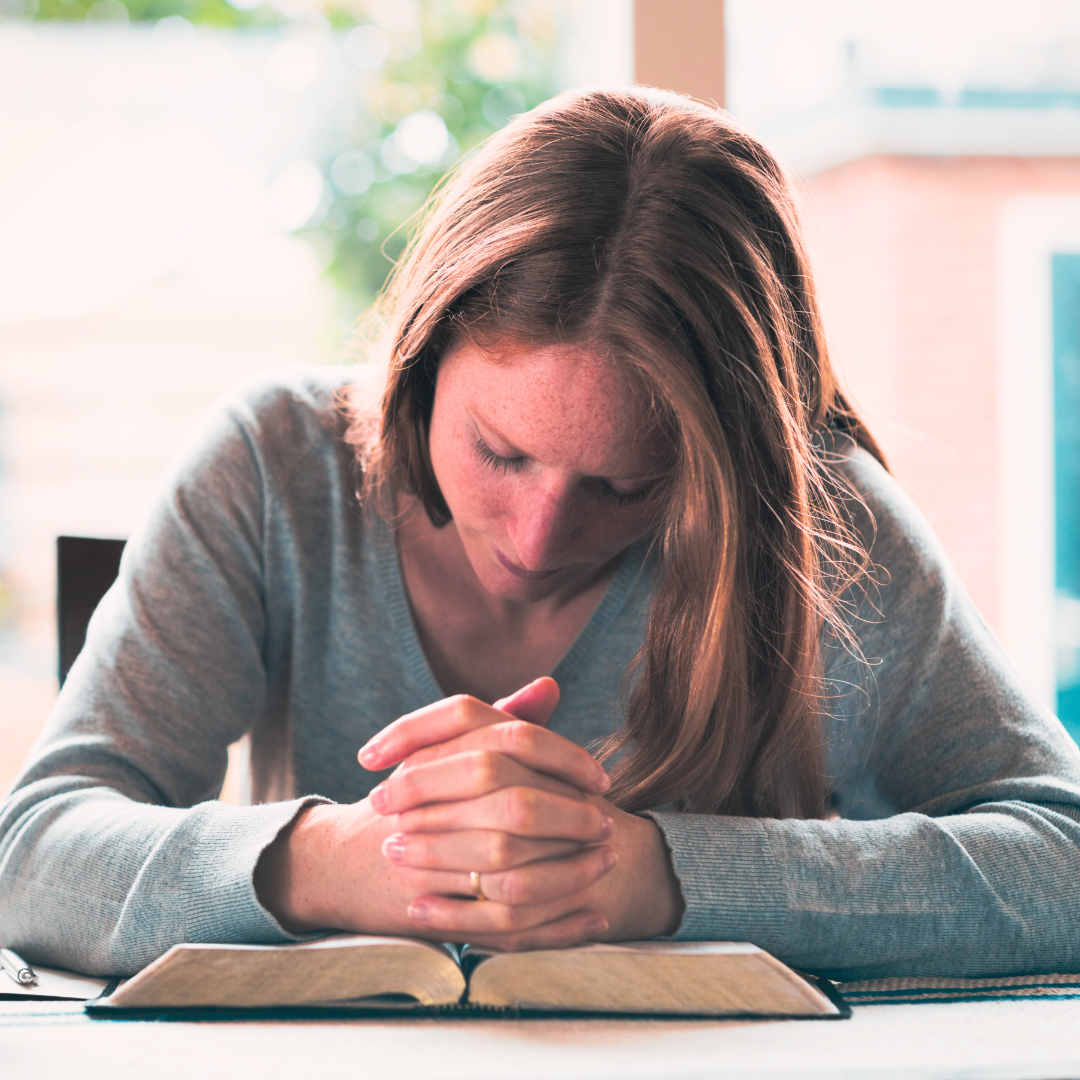
Kathryn Pasker Ineck contemplates the beauty of prayer-helps in times of crisis.
Hail Mary, full of grace, the Lord is with you …
I prayed aloud, mechanically and frantically as I drove to the hospital. I had all four kids strapped into their carseats and tried to keep from speeding. Minutes before, our youngest son—a 3-year-old—had awoken from his nap and climbed carefully down the stairs, one step at a time, and clinging to the banister, croaking, “Mommy. I can’t breathe.” His little lips were already blue, and his eyes were wide and glazed.
I had quickly sent up a prayer of gratitude that we had recently given him a toddler bed because he wouldn’t have been able to call for me if he were still in his crib. Our three older kids leaped into action, gathering shoes and socks and all the things their little 5- to 9-year-old minds thought we would need. Digit had helped me administer an inhaler to his little brother in case that would help. Rooster was still gasping from the back seat, and I felt frozen. How do you pray in a time like that?
For the sake of His Sorrowful Passion, have mercy on us and on the whole world …
I was driving the kids to their drama production in the middle of a rainstorm and in the middle of rush hour traffic. I was flustered from an afternoon of rushing through an early supper, gathering all the necessary costume parts, reassuring frayed nerves, and making myself presentable too. Jim was meeting us at the play after his shift at work, and I was hoping against hope that he would make it there on time. As a result, I was rather … grumpy.
The kids were all quiet in the car until one voice piped up from the backseat and began praying the Divine Mercy Chaplet. Decade by decade, they took turns reciting the prayers.
I believe in God, the Father Almighty, Creator of Heaven and Earth …
The familiar words poured forth with confidence from an app on my phone. The times of coronavirus has made hospital waiting rooms a thing of the past, and I didn’t know what to do with myself as Jim underwent emergency surgery. Do I sit in the parking lot? Run home to check on the kids and make sure they are up and at ‘em? Logical assurance that all would go well conflicted with fear: what if it didn’t?!
It happened to be the Feast of Our Lady of the Rosary, but I suddenly couldn’t remember the Apostle’s Creed—or any of the sets of mysteries—and I was grateful for the app to help me.

Like many Catholic children, I memorized countless prayers at home and in Sunday School. These prayers can feel rote and stale if we rattle them off, and many of our Protestant brothers and sisters are skeptical of the vast oceans of written prayer within the Catholic Church. In his Gospel, Matthew offers instruction on how to pray, and just before introducing the Lord’s Prayer (the Our Father) Jesus says, “In praying, do not babble like the pagans, who think that they will be heard because of their many words” (Matthew 6:7).
Many Christians believe this to be an admonition against any memorized, written prayer even though it is an introduction to the most widely memorized and recited Christian prayer in history. They do have a point, because we are called to have a relationship with Jesus. It’s pretty hard to converse with Him if we just offer the prayers of others, right?
Written prayer takes advantage of centuries—millenia, even!—of people across time. It links us to the people who have gone before us, and like, the Bible, they remind us that the human experience has not fundamentally changed across time. People have struggled with the same hurts, fears, sins, and sorrows, as well as the same joys, praise, comfort, and gratitude. This becomes obvious as we enter into the Book of Psalms, which are a collection of prayers and lamentations for all occasions that are meant to be read in times that we cannot find the words we need for ourselves.
Many of the prayers of Church Fathers (and mothers!), theologians, and laity read like poetry, and offer deep insight along with organized thoughts. They are definitely not required, but in reading and praying through them, we can organize our prayer in ways that can open the door to conversation with Christ and find connections with and through Him that we may never have considered before.
If we memorize our favorites of these prayers, they are at hand in times of crisis. In praying the Hail Mary while driving my son to the hospital, I was able to cling to Our Lady’s hand, ask her to pray for my son, and find a deep peace that helped me and the kids. It also offered an example to their little souls on how to handle a crisis. In praying the Divine Mercy Chaplet on the way to the play, the kids ministered to me and we were able to reorganize our thoughts and prepare ourselves for a new experience. In accepting assistance from an app to pray the Rosary—which I had previously viewed as too electronic and impersonal—I felt hope and security wash over me with the words that were so dear to my heart and balm to my soul.
As for my little crises? Rooster recovered from the first of many bouts of croup. My husband met us at the door and the kids did a great job. And, last year, the surgery went well. More opportunity for prayer and more opportunity for conversation with the Father and the Son and the Holy Spirit.

Copyright 2023 Kathryn Pasker Ineck
Images: Canva
About the Author

Kathryn Pasker Ineck
Married for more than two decades to her best friend, and mom of four teens, Kathryn finds that life is never boring. She pursues the heart of God--led by His gentle Mother--and relies on the Divine Mercy Chaplet, a desire for chocolate, and an insatiable thirst for reading into the wee hours of the morning. She writes to maintain her sanity at Kathryn Pasker Ineck.


.png?width=1806&height=731&name=CatholicMom_hcfm_logo1_pos_871c_2728c%20(002).png)
Comments